Sponsored by XenocsAug 10 2022Reviewed by Louis Castel
The study of metal oxide nanoparticles (NPs) is an intensive area of scientific research due to their specific properties, making them prime candidates for various potential applications across a wide range of fields.
Specifically, due to their small size, they exhibit a high surface area to volume ratio and lower melting points in contrast to their bulk counterparts, as well as high porosity and considerable van der Waals interactions.
Moreover, by adjusting their composition, it is possible to trigger photocatalytic behavior, electrical conductivity, high toughness and wear resistance, paramagnetism, or even enhanced insulation properties.1
One way to manufacture metal oxide NPs is flame spray synthesis (shown schematically in Figure 1), a method that results in the rapid formation of nanoparticles of high purity accompanied by more complex structures depending on the fundamental formation mechanisms.
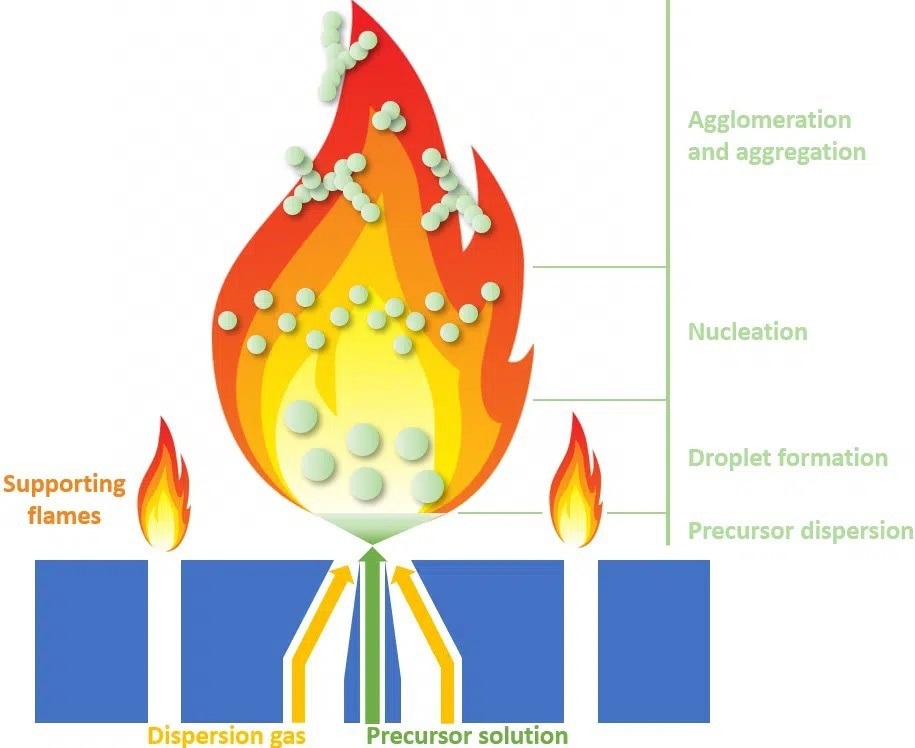
Figure 1. Schematic representation of the flame spray synthesis process. Image Credit: Xenocs
Aggregates in the shape of fractal structures can be acquired by the so-called gas-to-particle route, while precipitation will generate shells of particles or solid particles in the micron and submicron range.
As for almost all manufacturing processes, the main objective is to create structures of consistent size and shape in a reproducible manner. In this respect, small-angle X-Ray scattering (SAXS) is considered an exceptional structural characterization technique that can be utilized to probe the influence of different parameters on the final particle system.
Its uniqueness comes from providing information across different structural levels, from primary particles to fractal structures, which can be a problem for the majority of competing techniques.
Recently, a team of scientists from the Karlsruhe Institute of Technology has utilized SAXS, along with transmission electron microscopy (TEM), to investigate the influence of the precursor solution concentration, in the spray flame synthesis process, on the resulting primary particles and hierarchical aggregates of zirconium dioxide.1
Compared to TEM, where particles included in the analysis are carefully selected through a laborious and tedious process and have a greater risk of introducing a bias in the data analysis2 (by favoring larger particles which generally offer a higher contrast), SAXS was able to deliver reliable quantitative data on the characteristics of both primary particles and fractal structures.
Characterization of Primary Particles and Fractal Structures by Means of SAXS
In a single SAXS data set, acquired with an exposure time of 10 minutes, information on both primary particles and more intricate larger structures (fractal structures) was collected. As shown in Figure 2, the scattering data can be separated into two regions relative to the two structural levels.
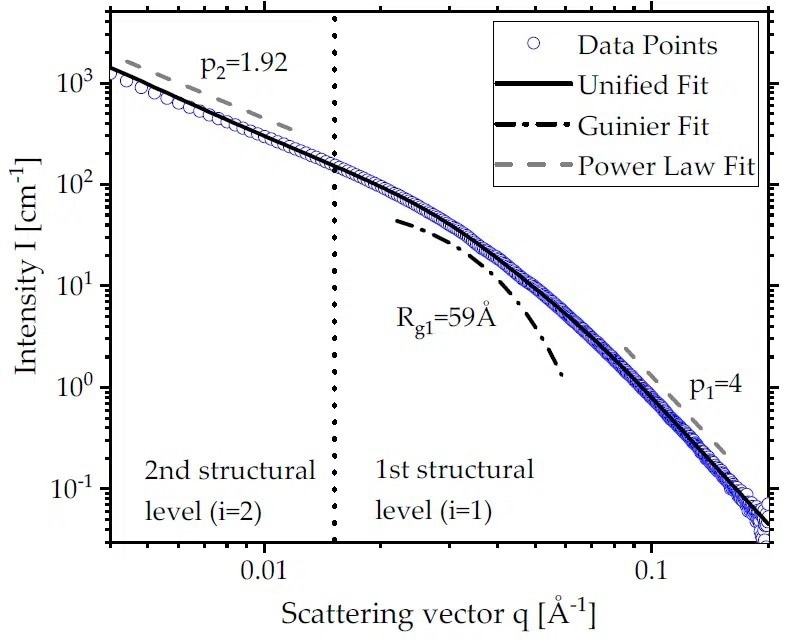
Figure 2. SAXS scattering profile collected on a sample produced with a precursor concentration of c = 0.4 mol L-1. Dashed lines represent the local fits corresponding to each of the two structural levels defined. Image Credit: Materials, 2022, DOI: 10.3390/ma15062124
Data gathered at high q values determines the small primary particles (that form the 1st level), while it is possible to extract characteristics of the aggregates (that form the 2nd level) from the low q regime.
Local Guinier and Power Law fits will ultimately offer information about the mean characteristic size of particles (via the radius of gyration Rg) and the morphology of the fundamental structures, respectively.
Note, for the second structural level, it was not feasible to conduct the Guinier fit due to restrictions in the q range accessible with SAXS. Ultra small angle X-Ray scattering (USAXS) would have offered the missing information.
Size and Polydispersity of Primary Particles
The Guinier Fit uncovered a mean particle size of Rg1 = 59 Å at 0.4 mol L-1 concentration for the primary particles.
Simultaneously, the progressive change of slope in this regime indicates a high polydispersity of the primary particles. To fully optimize the manufacturing process, monitoring of the influence of the precursor concentration on the size of primary particles was conducted.
As illustrated in Figure 3, the application of medium and high precursor concentrations (c > 0.2 mol L-1) produces a reproducible process with a resulting stable particle size of around 70 Å. Conversely, lower concentrations create unstable manufacturing conditions with variable particle radii ranging from 20 to 70 Å.
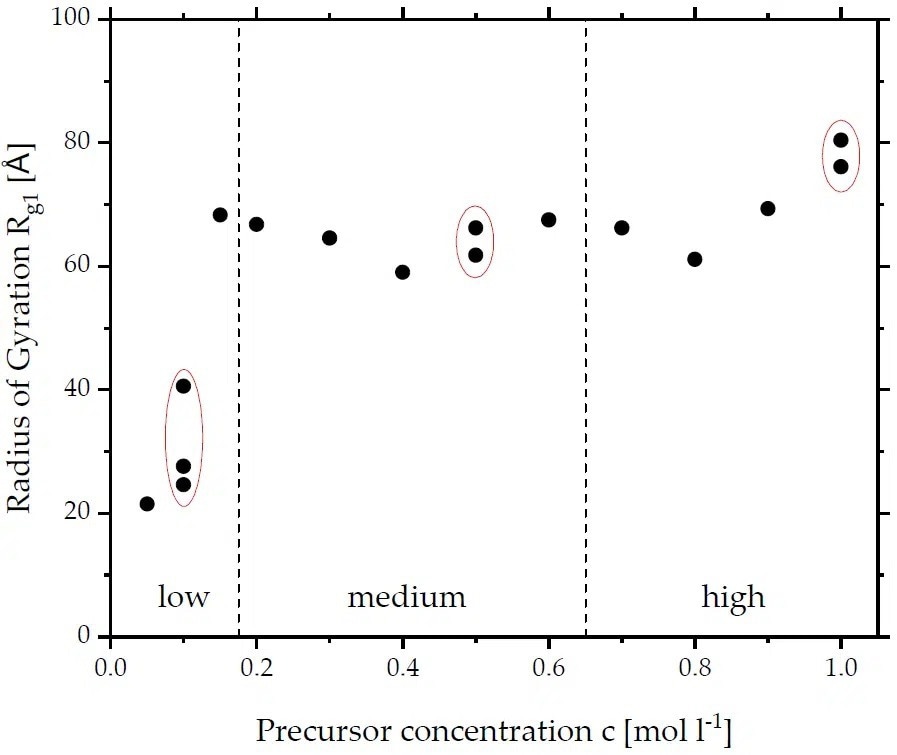
Figure 3. The radii of gyration of primary particles produced with different precursor concentrations grouped in regions: low, medium and high. Multiple experiments are grouped with a red ellipse. Image Credit: Materials, 2022, DOI: 10.3390/ma15062124
Other parameters, such as the polydispersity index (PDI), can be calculated easily using the radius of gyration. As mentioned previously, a high polydispersity is a common characteristic of spray flame synthesis demonstrated by the higher values of the PDI (Figure 4).
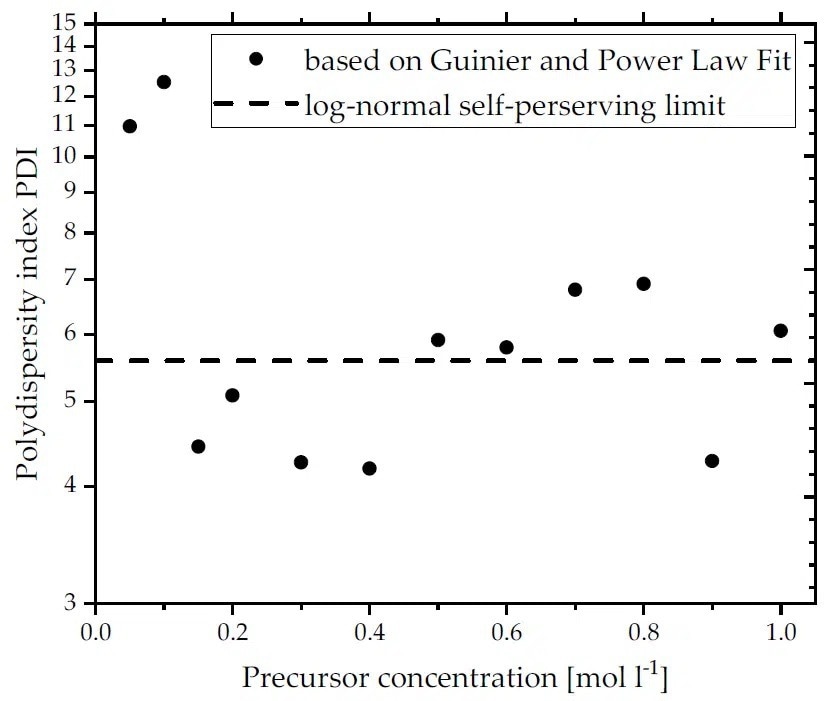
Figure 4. Polydispersity index calculated for primary particles manufactured with different precursor concentrations. Image Credit: Materials, 2022, DOI: 10.3390/ma15062124
However, the claim of stable manufacturing conditions obtained with medium and high concentrations is supported by the fact that the PDI values are scattered around the self-preserving limit for aerosol growth (PDI = 5.56) and in accordance with results from similar experiments.
At the other end, lower precursor concentrations generate PDI values as high as double the self-preserving limit, proving once again the unreliability of the manufacturing process in these concentrations.
Fractal Properties
From SAXS measurements, the slope p of the Power Law can be established providing thus the relevant information about the system’s fractal properties. For the first structural level it determines the surface of primary particles, while for the second structural level it explains the shape of the fractal structures.
As shown in Figure 5, for medium and higher precursor concentrations (> 0.2 mol L-1) p takes values around 4 for primary particles, which suggests a Porod behavior with smooth surfaces and sharp interfaces. On the other hand, lower concentrations create particles with rough surfaces bringing about smaller p values.
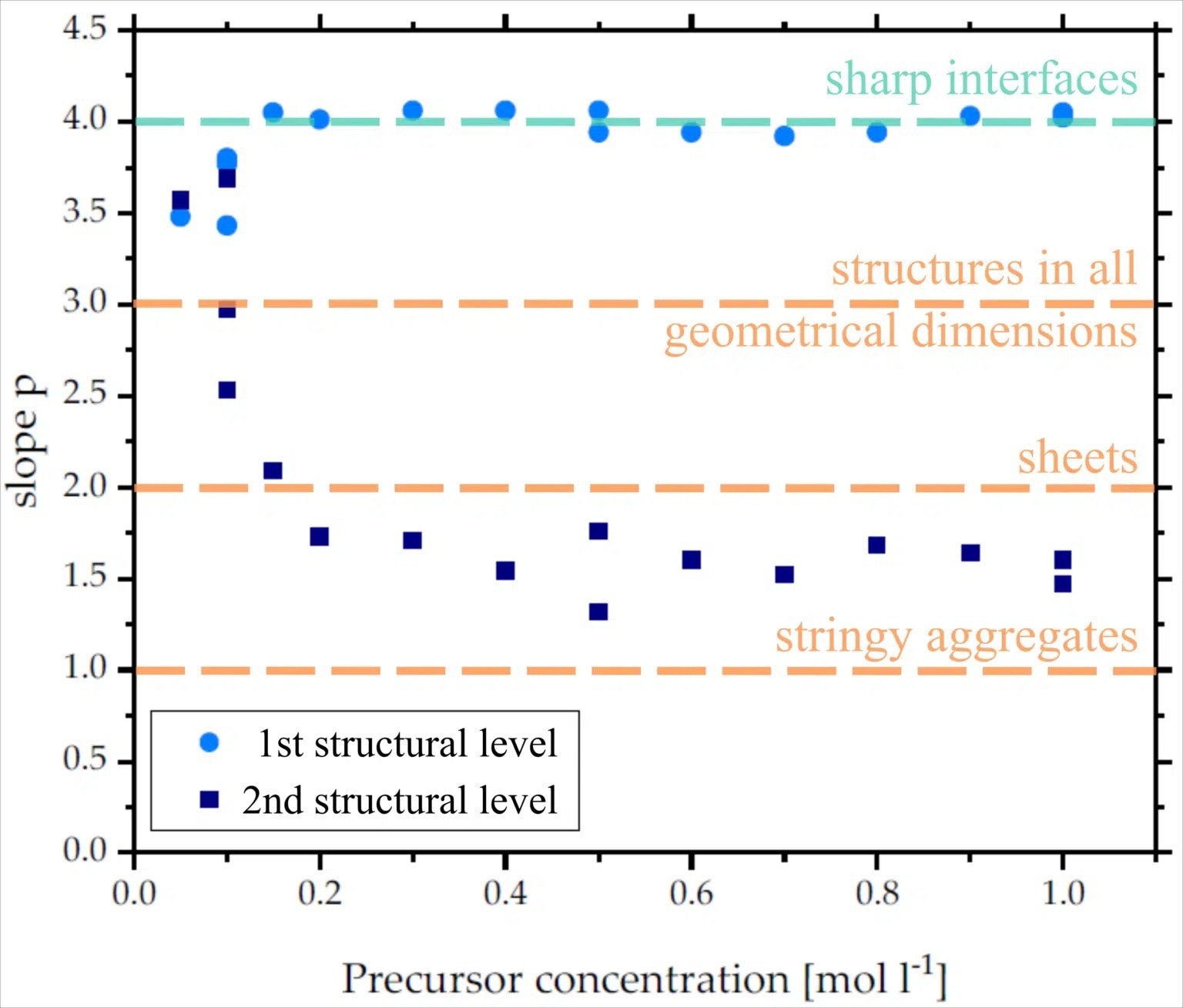
Figure 5. The slope of the power law fit corresponding to both structural levels and determined for different precursor concentrations. Image Credit: Materials, 2022, DOI: 10.3390/ma15062124
TEM measurements were also able to verify the features of the smooth particles at high concentrations. However, the smaller particle sizes produced at lower concentrations made it impossible, due to resolution limitations, to resolve the roughness of the surfaces.
For the second structural level, the p values collected at concentrations c > 0.2 mol L-1 demonstrate the presence of fractal structures made up of flaky aggregates with stringy parts, also verified by TEM.
At reduced concentrations, the greater values of p signal a mixture of large particles and mass fractals of smaller particles, both enhancing the intensity in the same scattering vector range.
Conclusions
Throughout the course of this study, the influence of precursor concentration, in the spray flame synthesis process, on the resulting primary particles and fractal structures was investigated using SAXS and TEM measurements. It was demonstrated that SAXS is an exceptional tool for investigating such complex mixtures of single particles and aggregates.
A single data set is comprised of information on particle size, polydispersity and fractal properties. Moreover, particle size distribution analysis is also displayed in the original work. Additionally, wide-angle X-Ray scattering has been applied to show the formation of the chemical compounds desired, namely zirconium dioxide.
The research demonstrated that low precursor concentrations (< 0.2 mol L-1) produce inconsistent and unstable manufacturing conditions. However, stable and reproducible processing conditions are acquired with medium (c = 0.2-0.6 mol L-1) and high (c = 0.7-1.0 mol L-1) precursor concentrations.
Ultimately, the researchers were able to establish the particle formation mechanism, namely the gas-to-particle route, as there was no evidence for the formation of particles larger than half a micron.
Discover more applications of SAXS by downloading this SAXS Application Overview
References and Further Reading
- Simmler, Mira, Manuel Meier, and Hermann Nirschl. “Characterization of Fractal Structures by Spray Flame Synthesis Using X-ray Scattering.” Materials 15, no. 6 (2022): 2124.
- Kammler, Hendrik K., Gregory Beaucage, Roger Mueller, and Sotiris E. Pratsinis. “Structure of flame-made silica nanoparticles by ultra-small-angle X-ray scattering.” Langmuir 20, no. 5 (2004): 1915-1921.

This information has been sourced, reviewed and adapted from materials provided by Xenocs.
For more information on this source, please visit Xenocs.